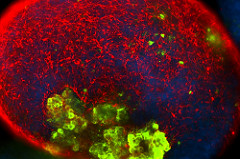You’ve likely heard about stem cells and the constant work researchers are doing with them, but what exactly is it about stem cells that makes them so exciting? There are several types of stem cells that you may be familiar with: embryonic stem cells, adult stem cells, and induced pluripotent stem cells. They are briefly defined as stem cells obtained from embryos, from various organs and tissues, and from reprogramming adult cells, respectively. We will avoid the ethical debate surrounding stem cell usage, but if you are interested, you can read more about that issue here. Stem cells have caught the attention of the scientific community for their regenerative abilities; more specifically, people are interested in the potential of these cells to treat diseases since they are “blank” cells that have the ability to transform into specialized cells. Stem cells have been shown to be promising for medical purposes through various studies, but we are still far from being able to fully manipulate and take advantage of their unique abilities. A recent finding, however, may serve as the next step towards unlocking their full potential.
Image Source: Science Photo Library – STEVE GSCHMEISSNER
Researchers from UCSF have found out how one might control embryonic stem cell differentiation. The researchers used tem cells obtained from mice and manipulated a gene called Brn2, which serves as a signal for differentiation into neurons. By using pulses of blue light, the researchers were able to control the strength and length of the Brn2 signal. They found that the stem cells ignored weaker and shorter signals, but responded to stronger and longer signals, by transforming into neurons. Their work can be viewed in this fascinating video.
The results of this study suggest that it may be possible to control mass stem cell differentiation, which would be particularly useful for medical purposes such as growing organs for transplants and repairing tissue. However, the researchers acknowledge that much more work needs to be done in order to fully realize the goal of controlling stem cells.
Feature Image Source: Stem Cell Week 2012 by UCI UC Irvine











Wow, this is amazing!